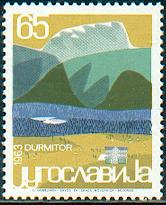
The use of the name Montenegro began in the 15th century when the Crnojevic dynasty began to rule the Serbian principality of Zeta, After World War I, Montenegro was part of the Kingdom of Yugoslavia. In 1992, Montenegro federated with Serbia, first as the Federal Republic of Yugoslavia and, after 2003, in a looser union of Serbia and Montenegro. Montenegro formally declared its independence on 3 June 2006.

This national park is along the Tara river canyon, which has the deepest gorges in Europe. It has dense pine forests, clear lakes, and is traversed by rivers and underground streams.
This property combines 28 sites, located in Bosnia and Herzegovina, western Serbia, western Montenegro and central and southern Croatia with distinctive medieval tombstones, or stecci mostly carved from limestone. The cemeteries date from the 12th to 16th centuries, and are laid out in rows, as was the common custom in Europe from the Middle Ages.
Joint listing with Italy and Croatia. This property consists of 15 components of defence works in Italy, Croatia and Montenegro, spanning more than 1,000 kilometres between the Lombard region of Italy and the eastern Adriatic Coast. The fortifications throughout the Stato da Terra protected the Republic of Venice from other European powers to the northwest and those of the Stato da Mar protected the sea routes and ports in the Adriatic Sea to the Levant.
Lynn Salmon <>{
Last updated: May 6, 2021